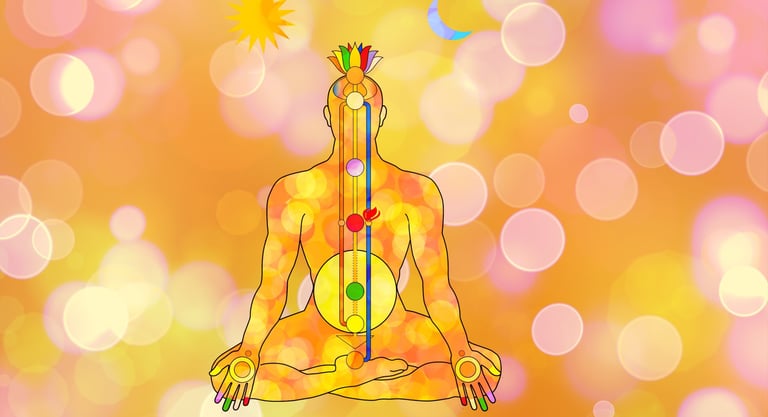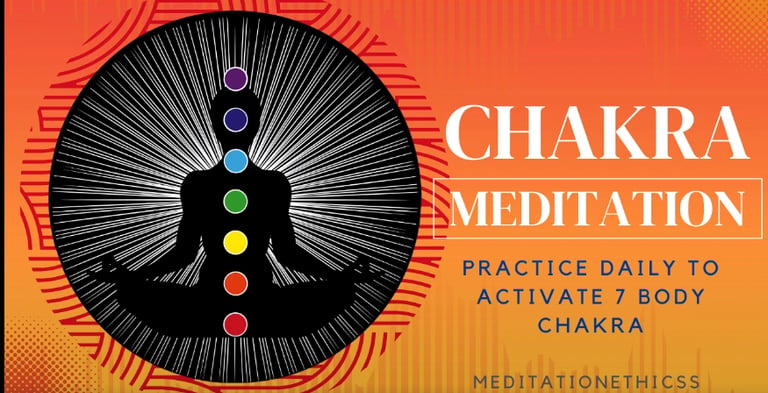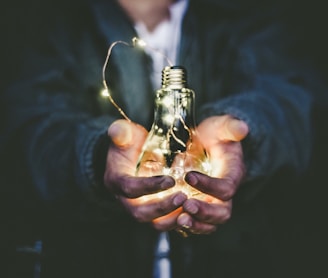What is the energy centre of the body?
The body's structural components and the internal life processes have traditionally been seen as being inseparable in eastern philosophy and medicine, which have their roots in ancient India and China. They refer to specific entities in the human body that symbolise the flow of life energy and, in a sense, act as conduits for that flow but do not correspond to anatomical structures recognised by Western science and medicine. Their vocabulary is somewhere between structure and function.
The chakras are a person's biological field's energy centres, and they are in charge of that person's physiological and psychological state, as well as certain organ groupings. The Energy that spins in the chakras controls all essential bodily processes. These can be referred to as whirlpools, and in Indian culture, they are valued for their energy.
These centres are where the energy transformation process takes place. All of the organs and systems in the human body are fueled by vital energy, which travels along with blood along the meridians in the chakras. The human body is more vulnerable to numerous illnesses when the circulation in these meridians stagnates. Chi Gun, a traditional Chinese self-healing technique that awakens the energy centres, is a fantastic preventative technique created specifically to combat this stagnation. Chi Gun teaches people how to release their own energy by stroking particular regions that correlate to the various chakras.
The Vedic Canons list 49 chakras, seven of which are fundamental; 21 are located in the second circle and 21 in the third circle.
The Vedis assert that there are numerous energy pathways leaving the chakras and going in various directions. These three channels are all elementary. The spine is the primary location for the first one, known as shushumna. Ida and pingala, the other two energy routes, are found on either side of the spine. Most people's most active channels are these two, whereas Shushumna stays inactive.
The body's seven primary chakras rotate rapidly in healthy people but gradually slow down during illness or as we age. The chakras continue to be partially open when the body is in a state of harmonious equilibrium. Chakras that are closed off from the flow of energy can develop a number of diseases.
Muladhara, the first primary chakra, is situated at the tailbone at the base of the spine. This chakra stores life energy, which is the foundation of a powerful and robust immune system. It is impossible for someone to get ill, grow old, or even pass away before using up all of their reserves of this essential energy. Muladhara is in charge of controlling the basic will to live. It is also in charge of the big intestine, urinogenital system, teeth, nails, bones, and joints. Unreasonable fear, dizziness, a lack of assurance or faith in the future, leg and foot issues, and intestinal illnesses are the first signs of a dysfunctional Muladhara.
Lack of energy, digestive issues, disorders of the bones and spine, and nervous tension are just a few of the symptoms that can result from the Muladhara chakra's interruption of function.
Svadhistana, the second chakra, is situated three to four fingers below the belly button, at the level of the sacrum. This chakra controls the functioning of the kidneys, pelvis, and genitalia. Through this chakra, we can also sense the emotions of other people. Kidney issues, cystitis, and arthritis are signs of a broken Svadhistana.
Manipura, the third chakra, is located in the solar plexus region. Energy generated by digestion and breathing is stored and distributed from this chakra. It is in charge of the neurological system, liver, pancreas, gall bladder, liver, gastrointestinal system, and vision. The following signs of a sluggish Manipura include heightened and persistent worry, as well as digestive, liver, and neurological system issues.
The chest region houses the fourth chakra, Anahata, also known as the heart chakra. This chakra is where love comes from and goes to us. It is in control of the hands, arms, heart, lungs, and bronchi. Depression and asymmetry in the cardiovascular system are signs of stagnation.
The throat-level Vishudha chakra, which is the fifth chakra, is the seat of reason and logic. The skin, hearing organs, trachea, and lungs are all supported by this chakra. Lack of emotional stability, neck pain, sore throats, communication problems, and thyroid and esophageal problems are among the symptoms.
The third eye refers to the sixth chakra, Adjna, which is situated between the eyebrows. The seat of the human brain is right here. Adjna controls our harmonic development in addition to moving energy to the skull and pituitary gland. One may experience a decline in intelligence, headaches and migraines, earaches, olfactory ailments, and psychiatric difficulties if a person's third eye stops working properly.
Sahasrara, the seventh chakra, is located at the top of the head and symbolises the peak where a person's energy vibrates at the highest pitch. It is seen as a spiritual hub and the point at which cosmic energy enters the bodyA sluggish Sahasrara can cause a decline in inner wisdom or a lack of it, as well as a lack of fundamental intuition.
With this fundamental understanding of the first seven chakras, we can answer the question of how to apply this knowledge to identify the root causes of our issues and learn, with the aid of Eastern Medicine, how to regulate the functioning of the chakras on our own.
According to Eastern medicine, the distribution of our energy-conscious informational field affects our health. Ailments are inevitably brought on by a lack of vitality. In accordance with Tibetan Medicine, the only distinction between youth and old age, as well as between a sick and healthy person, is the rate at which the chakras' swirling energy centres rotate. Older people will renew and sick people will recover if these various speeds are balanced. Therefore, restoring and maintaining a balanced movement of the energy centres is the best approach to retain and keep our health, youth, and vigour.
Through a series of physical exercises, you can maintain the chakras' equilibrium the simplest way possible. Yannis referred to these as rites rather than merely workouts. The human body may shape its energy centres to perform at their best thanks to these rituals. Every morning, if possible, the seven rituals—one for each chakra—must be carried out jointly. If that's not possible, they must be done at night. Rituals should only be missed once a week for the optimum outcomes because missing more than that throws the energy distribution out of balance. The daily chakra rituals are essential for both physical and mental well-being as well as success in all areas of life. You will also become happier once you learn how to change your energy, Yannis added.
Meditation is another technique for maintaining the chakras' equilibrium and ideal half-open position. Achieving calm, clarity, serenity, and overcoming despair are all aspects of the human experience that can be improved via meditation. These practises have developed over time in a variety of civilizations. Regular meditation practitioners tend to be calmer, more secure, happier, and more productive people. They utilise their mental and physical potential, abilities, and skills to the utmost extent, which makes them more effective in their daily lives.
We humans fail to recognise the immense latent powers that are still dormant in our bodies far too frequently. We need to figure out how to use and resuscitate them. The only way to do this is to practise meditation. Over a thousand years ago, wise thinkers in the East who thought meditation to be a necessary practise made this discovery. They discovered how to use their minds to affect their inside organs and regulate their metabolism.
Meditation is to the mind what exercise is to the body, and much like physical strength, mental strength may be developed via meditation. Just as in athletics, it is crucial for a person to exercise his or her body, it is crucial for a person to meditate in order to exercise their mind.
Early in the morning, ideally at dawn, is the finest time to practise meditation. Avoid meditating while you are depressed, angry, desperate, or ill because these strong emotional and physical disturbances prevent you from attaining enlightenment.
The undistracted quietness of a clean, peaceful room with flowers or the calming sounds of Mother Nature, such as those near a lake, river, waterfall, woods, or fields, are preferable for a good meditation session. Under the umbrella term "meditation," a wide variety of mental exercises with roots in historical traditions are included. These developmental paths for the mind can incorporate emotional, intellectual, and movement-specific components.
According to Dr. Wayne W. Dyer's book Real Magic, meditation can be structured or unstructured. The act of meditating is nothing more than quietly looking within and identifying your higher self. Instead of just talking about it, learning to meditate involves learning how to live.
www.lifethicss.com






